





?Insect behavior is deliberate and designed to eliminate weak, unformed, nutritionally deficient, unbalanced plants.? ~Dr. Arden Anderson
When I began reading about high Brix several years ago, I did so mainly for grape sugars and wine production. Then I discovered that Brix really applies to all fruits and vegetables for measuring flavor and nutritional value. As I read more, I kept seeing notations that high Brix greatly reduces, and in many cases, eliminates insect problems in the garden. Last summer the Japanese Beetles caused havoc in my garden so I set out to find out more about high Brix and insect resistance.
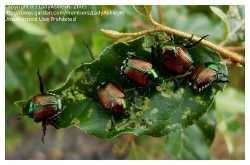
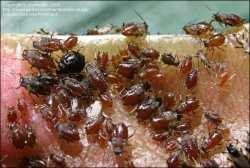
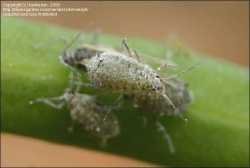 Japanese beetles
Japanese beetles
Black peach aphids
Cabbage aphid
In a nutshell what I learned was nutrient-dense plants (plants with high Brix[1]) are resistant to pests, weeds and disease. A reading of 12ºBx or higher is said to nearly eliminate insect infestation of any plant. Sounds simple, right? So, here’s some of the “fine print”… Healthy soils make healthy plants. My plants looked healthy to me; no lesions, no withering or yellowing leaves, and they seemed to be growing just fine. So why did I have mega pest infestations? If I had been able to look at my so-called healthy plants under high magnification, I could have seen some of the problem.
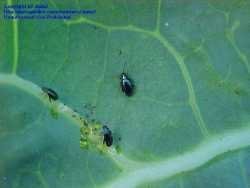
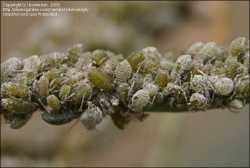 Cruicer flea beetle
Cruicer flea beetleWhen a plant is out of nutritional balance, internal pressures cause some cellular components like simple sugars or incomplete proteins to seep out to the surface of the leaves and stems. Voila! Free lunch for pests! Plants are just as susceptible to systemic nutritional imbalances as we humans are. As an example, we know too much sodium or sugar can affect our bodies (blood pressure), but we can choose how much goes into our bodies. However, our plants are largely dependent on us for their nutrition, at least for those nutrients no longer available in our soils, and our plants will tell us about any deficiency.
Our plants do communicate with us about their needs. When they need water, they communicate by wilting leaves. When they need phosphorus and calcium, they get weak and spindly. Some needs are communicated by leaf abnormalities, stunted growth and poor crops or even crop failure. A plant’s nutritional imbalance is also telegraphed to us visually by pest infestations, and later by the taste of their fruits or vegetables. The particulars of exactly which plant nutritional needs are in jeopardy take more than a quick glance when observing pests. You may need a new soil test to determine the imbalances in soil nutrients. The bottom line is that you need healthy soil to grow healthy plants that resist pests and disease.
How do we make healthy soil and thus healthy plants? Unfortunately not quickly, although there are some nutritional boosts (listed below) that can help on a temporary basis. It may take several years to build up soil to a healthy, sustainable level with a good soil-building program, but the results are evident in taste, nutritional quality, mineral density, and weed and pest resistance.
Anecdotal evidence has shown over and over that mineral deficiencies in plants allow pests to congregate and clean-up, whereas healthy plants with balanced nutrition do not harbor pests. There is a great story about Rodney Heinen, a farmer in Kansas, and grasshoppers in the Weston Price interview with Rex Harrill.[2]
I have also read that healthy plants emit energetic patterns that warn pests away. I know energy fields are a vital part of the Biodynamic Farming/Gardening methods, which have proven successful for many decades, although more in Europe than in the United States.
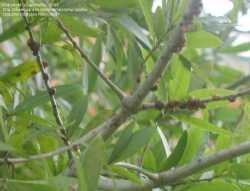
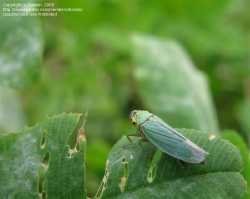
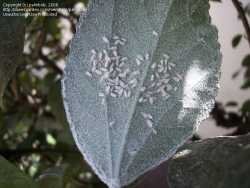
Dr. Carey Reams[3] taught that all disease is a result of mineral deficiency. Blossom end rot is a “disease” of insufficient calcium uptake, and farmers typically apply lime to increase soil calcium. However, that’s not always the answer. Lime is very slow to break down enough to make calcium available to the plants. Calcium is in the first line of defense against disease and pests. (Too much lime can raise the pH too much, and bring on a whole other set of problems.) So it is necessary to have both a good soil-building program, and a thorough understanding of plant nutrition.
There are three main components in building healthy soil: minerals, organic matter and microbes. The minerals come from the natural elements of this lovely blue planet. The organic matter is the carbon, nitrogen and oxygen supplied by our planet. The third component is the microbe population. It is necessary to have soil that is biologically active or the minerals and organic matter remain useless. It is the soil microbes that convert the minerals and organic matter into nutritional forms that plants can utilize. (Plants, in turn, give off the nutrients to feed the microbes. Nice system, yes?)
For short-term "rescue" until you can build healthy soil, very fine rock dust sprayed directly on plants and trees has been shown in research to deter insect infestations very effectively. Trails of rock dust around the garden help keep slugs out. You can employ foliar feeding of plants, and the use of fish emulsions applied to the soil, to act as a temporary soil nutritional boosts until you have a sustainable soil base. Kelp is also very effective because it is grown in very cold ocean waters that are nutrient-rich in minerals the plant kelp needs.
I wish I could tell you there is a "quick-fix" to keep pests out of your garden without toxic pesticides. There is not... but there IS a bright light down the road if you begin to build your soil to grow nutrient-dense plants, whether vegetables, fruits or flowers.
End Notes
[1] Although the brix scale is based on the amount of sugar dissolved in water, brix is an indirect measurement of the amount of amino acids, proteins, flavonoids, minerals and other nutrients in food. Sugar is only one component of brix.
[2] Rex Harrill has been a leader in education and demonstration of high Brix gardening for many years. I encourage you to check out his website which has valuable information on Brix and Insects, and this article by the Weston A. Price Foundation is a great interview with him answering questions about Brix, plant nutrition and Insects.
[3] Dr. Carey Reams http://www.aglabs.com/careyReams.html
The headline quote at the very top is from Dr. Arden Andersen, schooled as both an agronomist and a medical doctor. He is one of the world's top consultants on advanced soil and crop management.
See also: How to grow superb biological produce above & beyond ordinary chemical OR organic agriculture
Photo credits
I’d like to thank the following people for the use of their photos from BugFiles: Joan, cruicer flea beetle; kennedyh, cabbage aphid (2) and black peach aphid; palmbob, white fly; Vee8ch, Japanese Beetle; aprilwillis, scale; LadyAshleyR, Japanese beetle; and bonitin, leafhopper.
Copyright © www.100flowers.win Botanic Garden All Rights Reserved